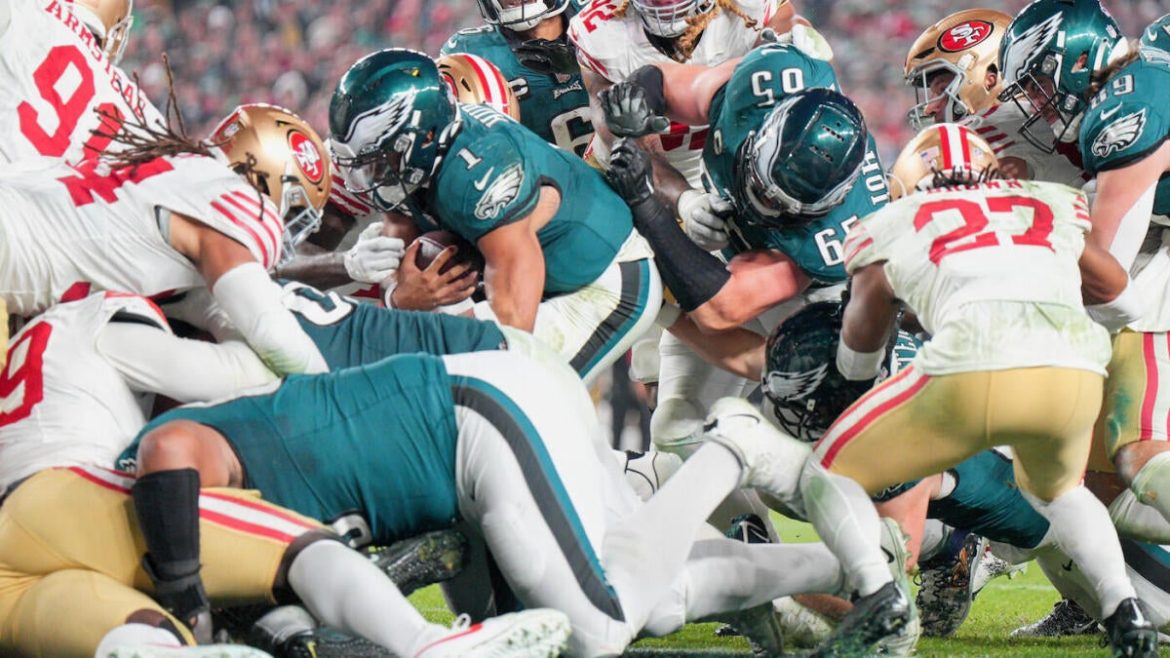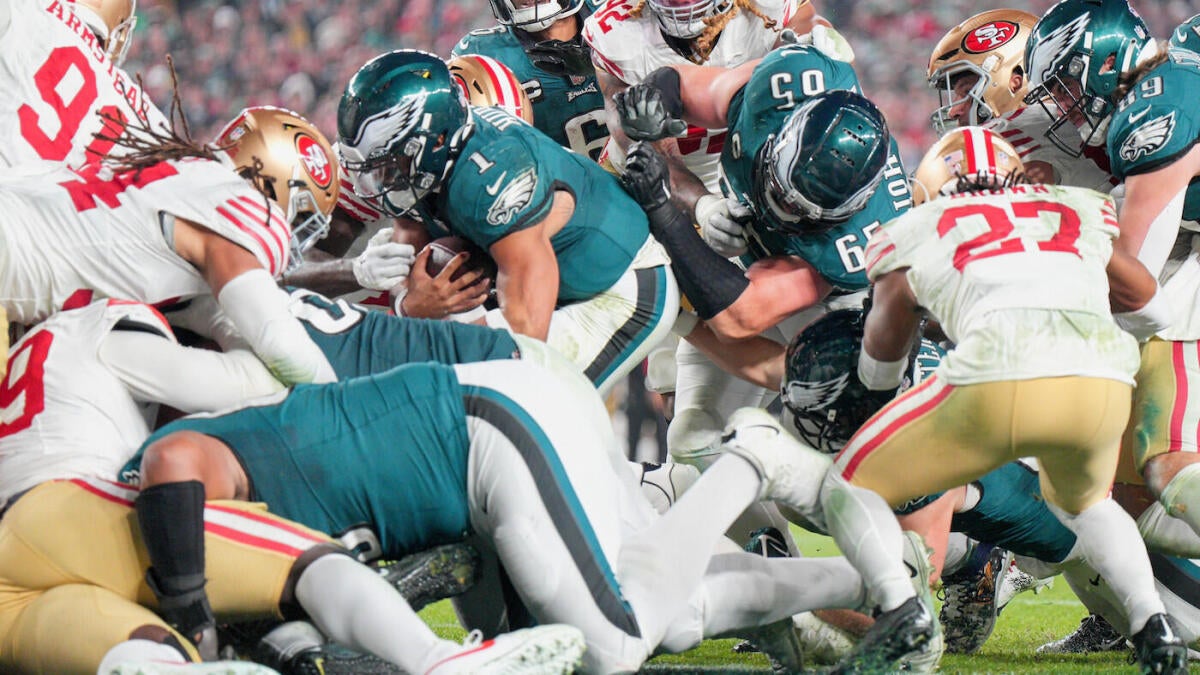The Controversy Surrounding the “Tush Push” Play in the NFL
An Engaging Introduction: The Rise and Debate of the “Tush Push”
The “Tush Push” has quickly become one of the most talked-about and polarizing plays in the NFL. Popularized by the Philadelphia Eagles, a Super Bowl-winning team, this short-yardage quarterback sneak involves teammates pushing the quarterback forward to gain crucial inches or a first down. Its notoriety and effectiveness on the field have sparked intense debate among NFL teams, owners, and rulemakers. As the NFL grapples with the play’s future, multiple reports and votes have centered on whether this tactic should be banned, signaling deep divisions within the league.
Origins and Mechanics of the “Tush Push”
The “Tush Push” is a variant of the traditional quarterback sneak, with a key difference: rather than the quarterback pushing through the line alone, teammates form a small convoy behind him and literally push him over the goal line or marker. This teamwork element amplifies the power and momentum beyond a solo effort, making it notoriously difficult for defenses to stop in critical short-yardage situations. The play became synonymous with the Eagles, who used it successfully on their path to a recent Super Bowl victory.
The Packers’ Proposal to Ban the Play
Driven by concerns about competitive fairness and safety, the Green Bay Packers spearheaded a proposal to ban the “Tush Push” play. Their approach initially sought to curtail the tactic by prohibiting pushing or pulling the ballcarrier anywhere on the field. The Packers argued that the play gives an unfair advantage and introduces a higher injury risk due to the unusual concentrated force applied.
The proposal underwent revisions before reaching NFL league meetings. One revision aligned more closely with older NFL rules from before 2005, emphasizing that players should not push or pull a runner. The Packers’ goal was to have a clear rule against this specific coordinated push, effectively outlawing the “Tush Push.” Their efforts brought the issue front and center at NFL owners’ meetings from Palm Beach to Minneapolis.
The Voting Outcomes and Current Status
Despite the Packers’ persistent efforts, the vote to ban the play narrowly failed. Reports indicate that while 22 owners voted in favor of the ban, this fell two votes short of the 24 needed (a 75% threshold) for the rule change to be adopted. Other sources mention an informal count showing a 16-16 split at an earlier meeting, demonstrating the league’s deep divide on the issue.
Leading voices like Eagles owner Jeffrey Lurie and proponents of the play mounted persuasive defenses during the discussions. Lurie famously delivered an extensive speech accompanied by videos demonstrating the play’s mechanics and impact, aimed at convincing fellow owners of its legitimacy and low risk.
The NFL’s Health and Safety and Competition Committees had earlier voted in favor of banning the play, showing that safety concerns were a significant part of the conversation. However, the full body of owners ultimately weighed factors beyond safety alone, such as competitive balance and preserving teams’ strategic diversity.
Reactions from Teams and Players
The controversy spilled over into social media and public discourse. The Philadelphia Eagles, proud of their innovative play, even posted compilations of the “Tush Push” on platforms like YouTube and social media, teasing their opponents. Eagles players, including quarterback Jalen Hurts and offensive lineman Jordan Mailata, publicly discussed the play, although Mailata surprisingly expressed openness to a ban, signaling nuanced internal views.
Other teams opposing the ban included the Baltimore Ravens, New England Patriots, Detroit Lions, and New York Jets, illustrating that support for the “Tush Push” extends beyond the Eagles and their immediate rivals.
Safety vs. Strategy: The Core of the Debate
The NFL’s official stance, as articulated by commissioner Roger Goodell, maintained that the issue was not about targeting a single team but focusing on a particular play’s risks and implications. Critics of the play argue that the concentrated pushing can increase injury chances, both to the quarterback and teammates involved, due to stacked bodies and increased force in a confined area.
Conversely, supporters see the “Tush Push” as a creative, legal tactic that enhances strategic depth. They contend that banning it would stifle innovation and undermine a successful competitive element pioneered within the league’s current rules.
Future Outlook: What’s Next for the “Tush Push”?
With the vote failing by a slim margin, the play is currently allowed to remain part of the NFL’s arsenal for the 2024 and 2025 seasons. However, the issue is far from settled. Discussions are ongoing, and the proposal could be reintroduced in future meetings. The Packers have revised their proposal previously, anticipating further regulatory efforts.
The division among owners suggests that further debate and advocacy will shape the play’s fate. Teams influential in the vote margin may continue to campaign either for or against the ban, and the NFL’s committees might revisit their recommendations based on injury data, player feedback, and competitive trends.
Conclusion: The “Tush Push” as a Symbol of NFL’s Evolution
The saga of the “Tush Push” plays out as a microcosm for the NFL’s balancing act between innovation, competition, and player safety. It underscores how a single play can ignite passionate debate over the nature of the sport and its future. Whether it remains a fixture or eventually faces prohibition, the “Tush Push” has already etched its place in NFL lore as a symbol of creative strategy, team unity, and the complex dynamics of rule governance.
For now, fans will continue to witness the “Tush Push” in action—a testament to football’s enduring capacity for innovation and controversy alike.





